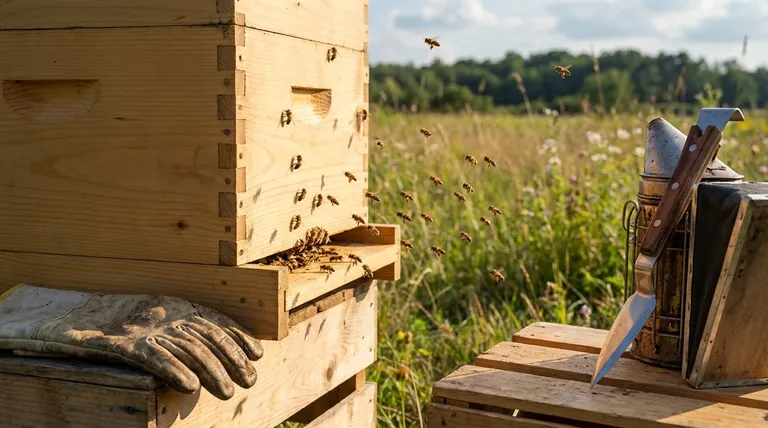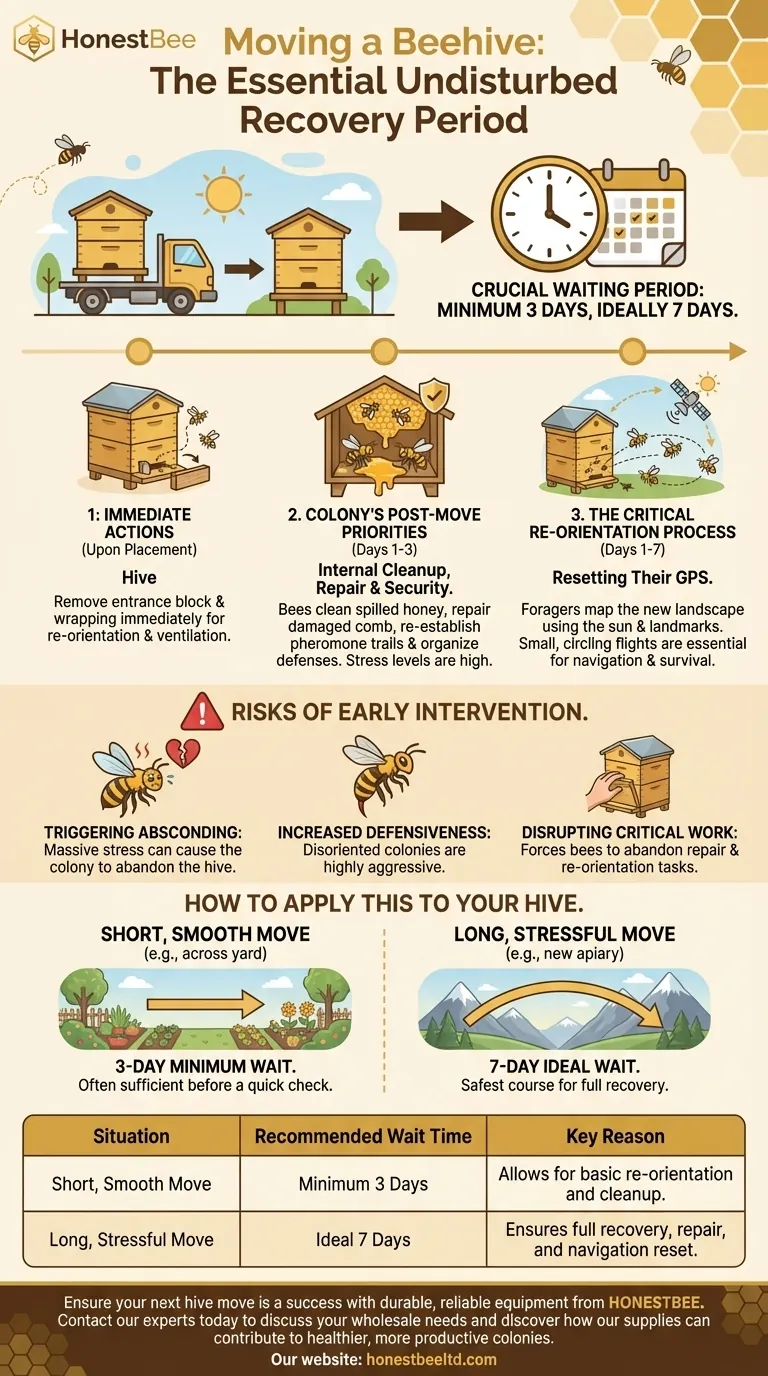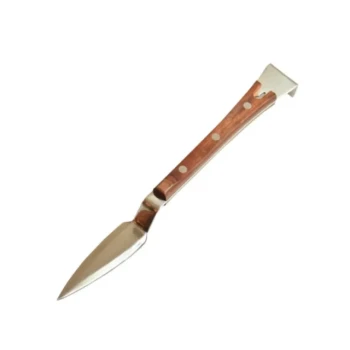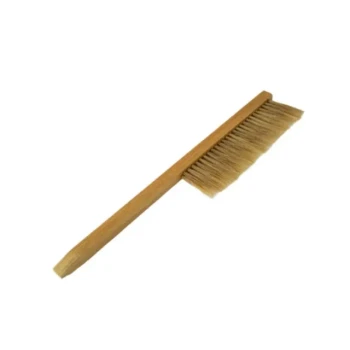After moving a beehive, it should be left completely undisturbed for a minimum of three days, but ideally for a full week. This crucial waiting period allows the colony to recover from the stress of the move, clean and repair the hive's interior, and for the forager bees to successfully re-orient themselves to their new location.
Moving a hive is a deeply traumatic event for a colony. The essential waiting period is not passive; it is an active recovery phase where the bees perform critical repairs and recalibrate their navigation, directly impacting the survival and productivity of the hive.

The Colony's Post-Move Priorities
Moving a hive is more than just a change of scenery. For the bees, it's a seismic event that triggers a cascade of urgent, instinctual behaviors.
Internal Cleanup and Repair
The jostling of transport inevitably causes damage. Frames can shift, comb can break, and honey can spill.
The colony's first priority is housekeeping. Worker bees will immediately begin cleaning up spilled honey to prevent robbing by other insects and repairing any damaged wax comb.
Re-establishing Hive Security
The move can disorient the guard bees and disrupt the pheromone trails that define the hive's entrance and territory.
The bees need time to re-establish this chemical signature and organize their defenses before you introduce the new threat of an inspection.
Calming a Stressed Colony
The vibrations and confinement of being moved put the entire colony on high alert. This physiological stress can take days to subside.
Leaving them alone allows their collective agitation to decrease, reducing defensive behavior and allowing them to refocus on productive tasks.
The Critical Re-Orientation Process
A bee's ability to navigate is the lifeblood of the colony. Moving the hive effectively erases their internal map, and rebuilding it is their most critical external task.
How Bees "Reset Their GPS"
Forager bees navigate using a sophisticated system based on the sun's position and key landmarks. When the hive is moved, their old map is now useless.
They are forced to delete their old navigational data and start from scratch.
The Importance of Re-orientation Flights
Upon exiting the hive at the new location, you will see foragers performing small, circling flights near the entrance. They are meticulously mapping the new landscape.
This process is non-negotiable for their survival. If they don't do this, they will leave to forage and never find their way back.
Removing Barriers Immediately
As soon as the hive is in its final position, you must remove the entrance block and any screen or wrapping.
This allows the re-orientation process to begin without delay and ensures proper ventilation for the stressed colony.
Understanding the Risks of Early Intervention
Patience is not just a virtue in this scenario; it's a vital beekeeping practice. Opening the hive too soon can have severe consequences.
Triggering Absconding
An early inspection introduces a massive new stressor on top of the already traumatic move.
This combination can be enough for the colony to decide the new location is untenable, causing them to abscond—abandoning the hive entirely.
Increased Defensiveness
A disoriented and stressed colony is a highly defensive one. An inspection before they have settled will be met with significant aggression.
This makes the inspection unpleasant for you and more stressful for the bees, creating a negative feedback loop.
Disrupting Critical Work
When you open the hive, you force the bees to abandon their essential repair and re-orientation tasks to address the perceived threat.
This needlessly prolongs their recovery period and delays their return to normal foraging and brood-rearing activities.
How to Apply This to Your Hive
Observe the hive from a distance, but do not intervene. Your decision on when to first inspect should be guided by the nature of the move.
- If the move was short and smooth (e.g., across the yard): A 3-day waiting period is often sufficient before performing a very quick check.
- If the move was long and stressful (e.g., to a new apiary): Waiting the full 7 days is the safest and most prudent course of action to ensure a full recovery.
- If you see foragers actively coming and going with pollen: This is the best sign that the re-orientation has been successful and the hive is recovering well.
Granting your bees this period of undisturbed recovery is the single most important factor in ensuring a successful and productive move.
Summary Table:
| Situation | Recommended Wait Time | Key Reason |
|---|---|---|
| Short, Smooth Move (e.g., across yard) | Minimum 3 Days | Allows for basic re-orientation and cleanup. |
| Long, Stressful Move (e.g., new apiary) | Ideal 7 Days | Ensures full recovery, repair, and navigation reset. |
Ensure your next hive move is a success with the right equipment from HONESTBEE.
Moving hives is stressful for both you and your bees. Having durable, reliable beekeeping supplies is essential for minimizing that stress and protecting your investment. Whether you're a commercial apiary managing hundreds of hives or a distributor supplying fellow beekeepers, HONENTBEE provides the high-quality, wholesale-focused equipment you need for smooth, efficient operations.
Let us help you equip your beekeeping business for success. Contact our experts today to discuss your wholesale needs and discover how our supplies can contribute to healthier, more productive colonies.
Visual Guide

Related Products
- HONESTBEE Premium Italian Style Hive Tool with Hardwood Handle
- HONESTBEE Advanced Ergonomic Stainless Steel Hive Tool for Beekeeping
- Professional Dual-End Stainless Steel Hive Tool for Beekeeping
- Wholesales Dadant Size Wooden Bee Hives for Beekeeping
- Professional Galvanized Hive Strap with Secure Locking Buckle for Beekeeping
People Also Ask
- What are the benefits of a multi-functional hive tool? Streamline Your Apiary Workflow with One Tool
- What are the basic tools for beekeeping? Essential Starter Kit for Safe & Successful Hive Management
- How should beekeepers handle bees when using a hive tool? Master Calm, Deliberate Techniques
- What is required for regular inspections in both Flow Hives and Langstroth hives? Essential Beekeeping Tasks Explained
- What are some common uses of a hive tool? Essential Multi-Purpose Tool for Every Beekeeper



















